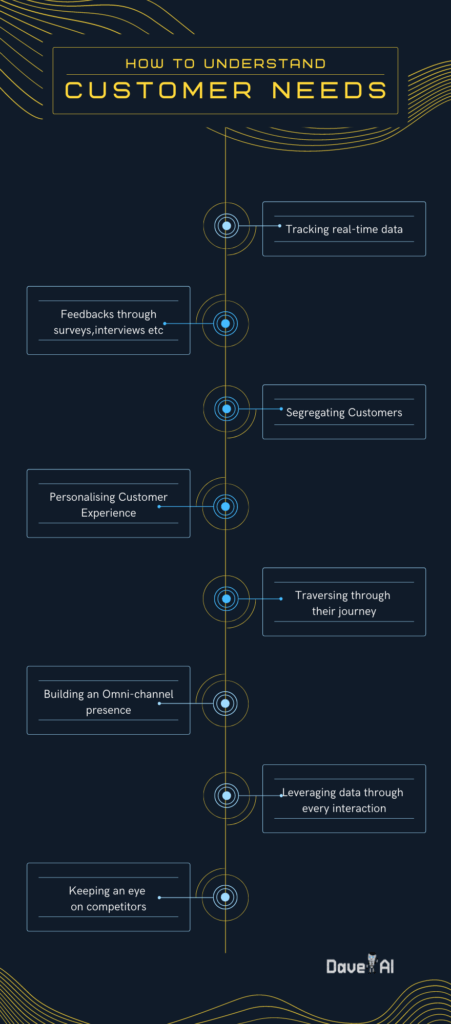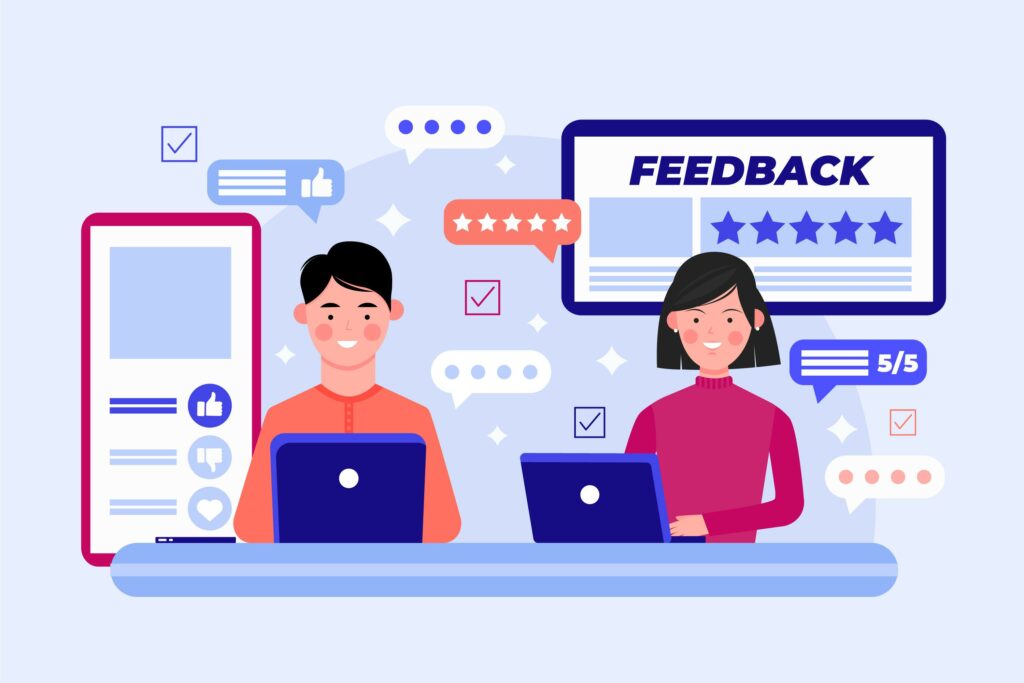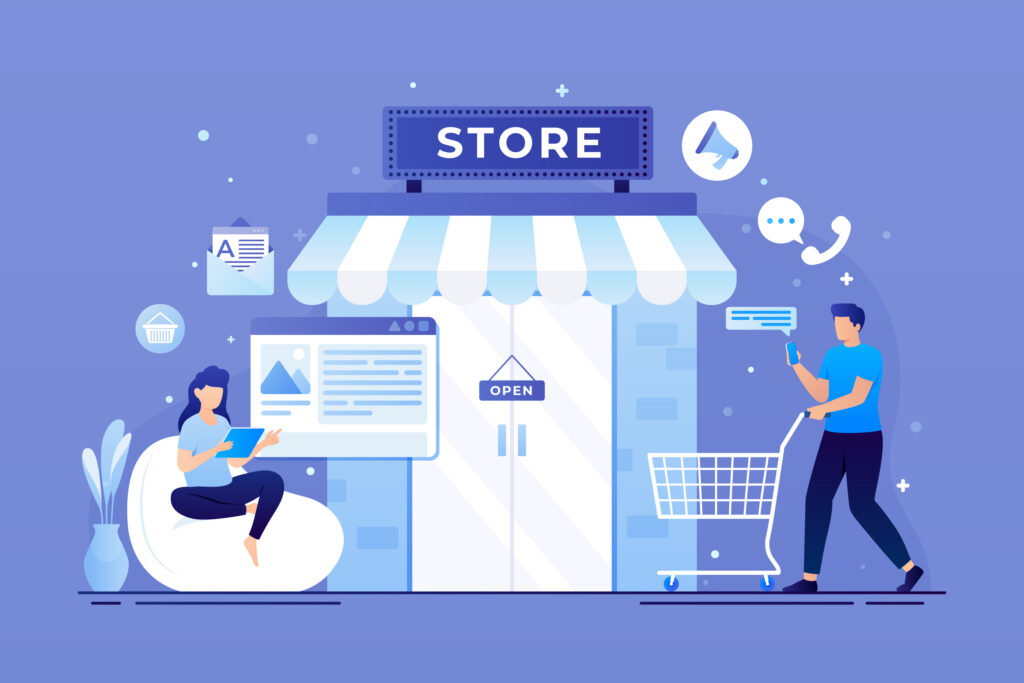Businesses and brands need to be emotionally intelligent in order to understand what the customers want. While garnering enough information and putting in the data first followed by empathetic understanding, brands can excel in understanding the customer needs and improve the overall customer experience.
Types of Customer Needs
Broadly, customer needs can be classified into physical and psychological. Among these two, physical needs are easier to understand due to their tangible nature. For example, expecting a higher sale of cold drinks on a hot Sunday is an example of understanding the customer’s physical needs. Gloves on a cold day, umbrella’s on a rainy day are other few examples of customer’s physical needs
Psychological needs, on the other hand, are more dispersed in nature and require higher empathy in order to understand. Impulse shopping, for example, is a psychological need of the customer. This is the key area wherein brands need to obtain more data and analysis in order to understand what the customer actually needs.
How can brands understand customer needs?
Customer-centric companies are 60% more profitable compared to the companies that ignore the same. Although seeming like an impossible task at first, there exist various ways in which brands can understand their customer’s physical and psychological needs. Below are a few potential practices followed by brands to obtain their customer personas.

Hear from them – Customer feedback
Who else can convey customer needs better than themselves? Large companies leverage this simple fact to provide the customers with what they desire. Apple, for example, serves the needs of the consumers’ psychological need to own a premium phone with high-level functions. With the constant demand from customers for better designs and upgrades, apple constantly rolls out new designs in every product like iPhone, iPad, etc.

Customer feedback can be obtained through various methods like surveys, interviewing the customers, feedback forms, social mentions, etc. The questions can range from how do you like our product to what more do you expect from us, allowing the customer to provide his suggestion for a better customer experience.
One size doesn’t fit all
While sounding like a plausible strategy, following the same marketing and sales techniques for all the customers is a big NO. What one customer might be interested in looking at can sometimes expunge another customer. To address this, brands should segregate their customers along with various metrics like demographics, interests, age, etc. Once segregated, they can employ personalized strategies to different sets in order to provide them with what they need.
Tracking Real-time Customer Preferences and Behaviors
Right from opening your webpage to purchasing a product or interacting at some touchpoint, customers give out valuable insights to the businesses. With the help of a tracking tool, businesses can gather these insights and dig out valuable inferences that help their proactive customer engagement.
These insights can range from customer clicks to time spent on each page of the website. Gathering such information can help brands derive conclusions from customer behavior and adapt an optimized approach to help them.
For example, a customer-facing difficulty navigating to a particular page can help the brands understand the need to simplify the user interface of their website. Similarly, if the customers are spending more time on a particular page, the brands can study that particular page to understand what’s retaining the user’s attention for so long and implement it on other pages.
Traverse the Customer Journey
Brands can empathize with a customer only if they travel through every phase the buyer travels. While it is possible to gather enough information about the customers who are buying, it is a bit more complicated to understand the reason for dropouts due to lack of information. Brands need to place themselves at every stage the customer passes through right from awareness to advocacy in order to understand their behavior patterns as well as the reason for dropouts. For example, a high dropout rate after checking out the prices would significantly point towards higher pricing of the product.
Personalize their experience
Delivering a monotonous flow of conversation with the customers on websites and other touchpoints is one of the major causes of brands not being able to comprehend the needs of their customers. It only takes a few minutes for a customer to interpret himself as just another number to the brand if the conversation is one-sided or the responses are pre-determined irrespective of the customer’s questions.
Brands should therefore focus on personalizing the conversation they have with the customers through automated tools and solutions. With advanced AI technologies, for example, brands can not only personalize the conversations with their customers but also recommend the products based on their preferences, thereby helping the brand connect further with the customer.
Leverage on every interaction
Apart from the insights obtained when the customer spends time on the website, brands should focus on leveraging enough information from the customer at every touchpoint or interaction. While it is humanly a cumbersome task to interpret the customer interests and preferences, advanced technologies like AI-powered chatbots and avatars can continuously exploit the interactions with users to jot points down their personas.
Build an omnichannel presence
With seamless integration of multiple platforms, brands should now focus on establishing not just multichannel but an omnichannel presence.

A cross channel interactions and presence can help the brands facilitate convenient interaction with their customers across the platform of their choice thereby increasing the inflow of data from the customers. This improves customer experience and provides more information to the brand.
Hawk-eye the Competitors
In the age of the internet transforming into its third phase web3, brands are not just competing with close-by businesses. Businesses all over the world are proactively engaged in learning more about customer needs and are aggressively pursuing the possibilities to facilitate them.
Competitors play a major role in setting up customers’ needs and expectations. Any latest improvement in one of your competitors’ offerings can reflect two possible scenarios- Your competitors came up with the innovation because there is a need for it in the market or your customers notice the innovation of your competitor and hence, expect the same from you. Either way, keeping a close eye on the competition helps the brand understand the direction in which the market needs are shifting.
Today shoppers are fully aware of the multiple possibilities available to them. It is on the brand’s books to attract these shoppers by providing better value than what their competitors are providing. The most proven and efficient way to achieve this is to pay heed to what the customer needs and improve the overall customer experience.



